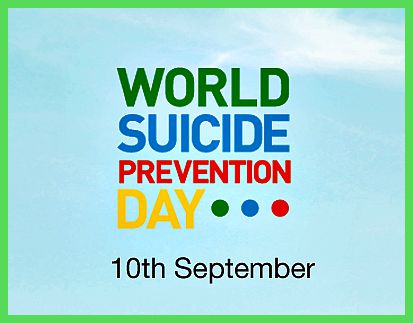What can we learn from Gaming addiction?
Online gaming is like every kid’s way of spending free time these days. From kids as young as five to adults, gone are the days when gaming was shied upon. While it’s fun and entertaining, games can be addictive, and not in a good way.

For most players, especially gamblers, gaming starts as a harmless way to have fun. You win a few times and lose sometimes. You don’t care because the games are thrilling and addictive. With time, the addiction becomes compulsive. What began as a fun way to spend time becomes a pathological behavior with great negative impact in your life.
Problematic gaming is endemic, which is why most developed countries have systems meant to help addicted players quit gaming. But as a gaming society, there is a lot to be learned, especially for games that involve gambling or spending money compulsively.
#1: It happens even to the Best
Some of the world’s worst gamers were
the best players at one point. Take Stu
“the kid” Ungar, for example. Forced by life’s
circumstances to fend for his ill mother after his father died while
he was a teen, Stu resulted to doing the one thing he knew the most:
gambling.
With his natural talent for gambling, Stu would defeat anyone who dared to play against him. Sometimes he gambled hundreds of thousands and won millions in return. As his confidence grew, his wins and fame followed.
Stu was the based poker player during his time and he knew it. He also had his flaws, the biggest being he couldn’t manage his wins. He was also addicted to drugs, the primary way he spent his bankrolls. In the end, Stu wasted away his millions, his bankroll, and his marriage and led to his untimely death in 1998.
#2: It disrupts more than Finances
Financial loss is the biggest consequence of compulsive gambling. But it’s not the only one. Most people only see the money impact because it’s the first sign of problematic gaming. Addicted people will usually borrow money from friends and families. They become indebted and start selling personal assets, sometimes leading them into poverty.
What may don’t see is the emotional implications of gambling, the social effects and its impact on the user’s mental health. Many pathological gamblers get anxiety the more their problem worsens. For some, it turns into constant worry of being targeted by debtors.
It’s not uncommon for problem gamblers to turn into drugs and alcohol addiction to cope with what’s happening in their lives. While revealing his problems with gambling, former Arsenal playmaker Paul Merson once said his primary was of dealing with his problem was to use drugs. The problem became so bad that after wasting all his wealth, he had to sleep at an open park.
#3: It’s a Problem even if you can afford it
While most people gamble their pocket change, some waste thousands of dollars. You can deposit up to $10,000 on online casinos like Kiwislots, so it’s easy to spend all your monthly salary playing. Unfortunately, most people don’t feel empathetic when you are spending large sums of money.
And that’s a big problem in the
gambling society. Simply because someone’s rich doesn’t mean they
can’t have an addiction. A lot of millionaires have wasted millions
of dollars unnecessarily because they couldn’t help it. While some
got help before ruining their lives, many of them sell assets and
funds meant for their children and families.
Again, addiction isn’t more about the financial loss than the impact it has on your mental health. Most addicts view gaming as a way to escape something else. It could be their work stress or marital problems. With time, it becomes pathological and they can’t help it.
#4: More needs to be done
When the Financial Times made an effort to reach banks, media organizations and casinos to talk about gambling addictions, almost everyone declined. Banks process the payments and have the data of how gaming affects players financially but they don’t really care.
Most brick and mortar casinos spend millions advertising their games but will do everything possible to suppress talks about addictions. Worse, even problematic players shy away from getting help or talking about their issues.
With few people willing to address the
issue, the gambling industry has a long way to go. For a start,
refusal to address the problem means players will continue suffering
from pathological gaming. Casinos may enjoy gambling in the short
term but they have to deal with indebted players sometimes in the
future. Simply put, there is no winner when society fails to address
major problems.
On the bright side, stakeholders are beginning to take responsibility. Several of the top gambling sites also have partnerships with gambling anonymous companies. Zamsino, for example, supports more than 20 casino sites, most of which also display their partners in helping those that are addicted. Zamsino offers online casinos for Kiwis but also have games that can be played by anyone in the world.
#5: It’s never too late to get help
Although thousands of gambling addicts waste away all their wealth to feed their addictions, thousands more get help. Paul Merson, NBA legend Charles Barkley and many more who’ve had issues with gambling turn their lives around.
It’s easy to know when gaming stops being fun and get help. If you keep increasing your bets even when you lose. You gamble when distressed and always lie to conceal your activities, start re-evaluating your relationship with gambling.
Try DIY tips to stop gambling like limiting your bankroll to a few dollars per month. Don’t use loans to gamble and never sell anything to feed your addiction. If nothing seems to work, contact gambling anonymous.
In Conclusion
No one should be blamed when gaming takes a toll on them. It happens to superstars and champions like Stu Ungar. M.I.T. geniuses and executives have wound up in the traps of gambling, including bankers. So, when you start to feel like gaming is a liability, look for a way out. If you are able to manage your bets, have fun gaming.























